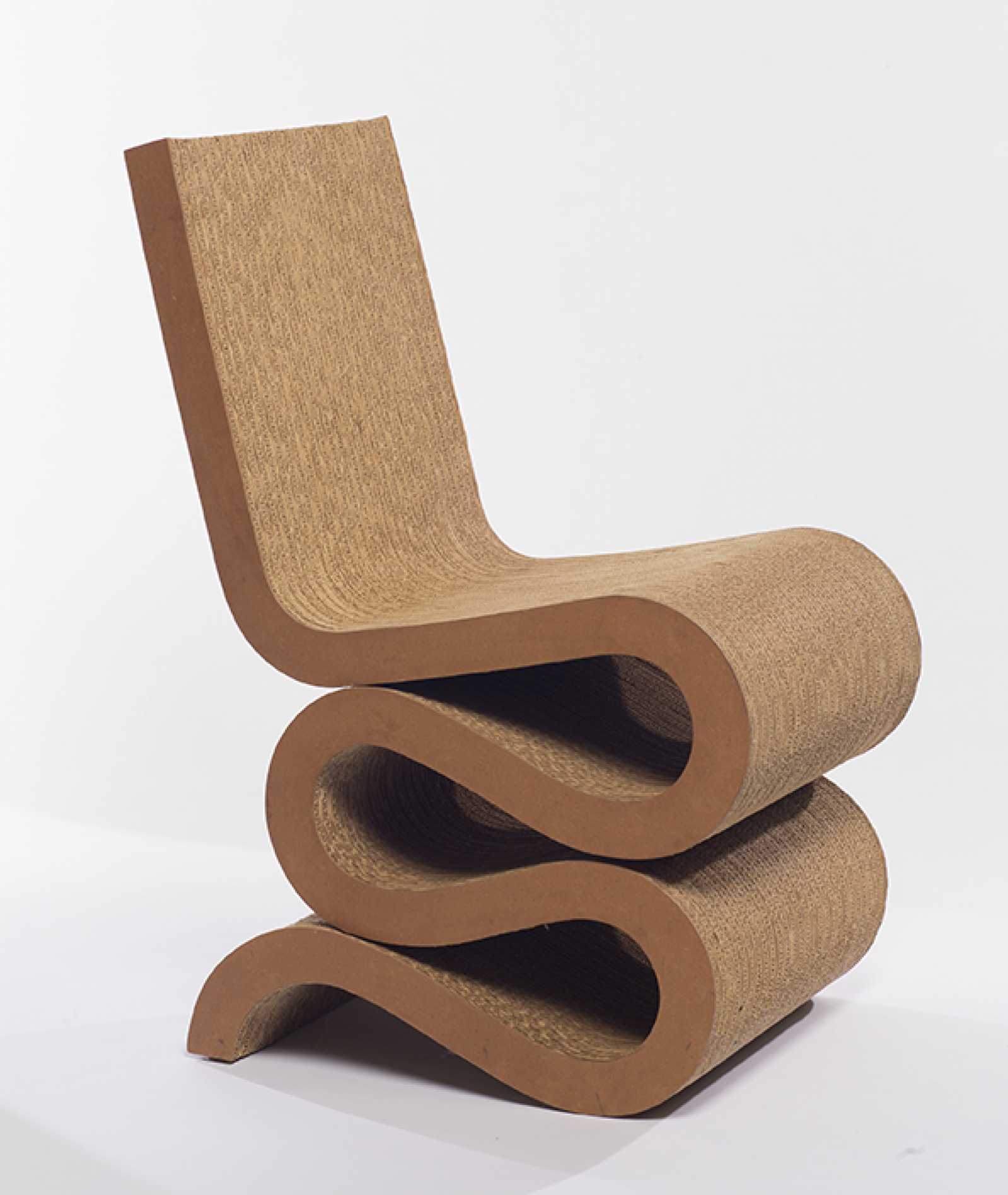Frank Gehry
Folded, curved, and buckled forms—as well as the use of unexpected materials—are hallmarks of Frank Gehry’s approach to architecture. Based in Los Angeles since 1962 and widely known as the architect for such monumental buildings as the Guggenheim Museum Bilbao in Spain (1997) and Walt Disney Concert Hall in Downtown Los Angeles (2003), Gehry also designs furniture, lamps, jewelry, and accessories.
In Wiggle Chair (from the Easy Edges Cardboard Furniture series), Gehry gives a surprising aesthetic dimension to cardboard. Despite the simple material, this and other chairs in the series owe their robustness and structural stability to the architectural quality of the designs. Here approximately 60 layers of cardboard are held together by hidden screws with a fiberboard edging. Gehry’s creativity is rooted both in his response to materials and in his exploration of new forms employing innovative fabrication techniques.
Gehry’s early art education began with sculpture before he developed his interests in architecture. Over a career of many decades, he has designed academic, commercial, museum, performance, and residential buildings spanning Europe, Asia, the Middle East, and North America. He was awarded the Pritzker Architecture Prize in 1989 and the National Medal of Arts in 1998. Formed in 2001, Gehry Partners, LLP employs a number of senior architects who have extensive experience; however, every project undertaken by Gehry Partners is designed personally and directly by Gehry himself.
Frank Gehry (American, born 1929), Wiggle Chair (from the Easy Edges Cardboard Furniture series), 1972, corrugated cardboard and masonite, 33 × 15 × 22 inches. Gift of L. J. Cella, 57-2010.
Naomi Shioya
A 1985 graduate of Japan's first glass program at Tama Art University, Naomi Shioya produced colorful blown glass assemblages that were met with early critical acclaim. A turning point in Shioya’s career came when she and her husband moved temporarily to Marseilles, France in the early 1990s. There, she was deeply affected by the bleak conditions of displaced Muslim Algerian immigrants and began to feel as if her pursuit of the beautiful in her glass work was in vain. In an effort to sustain a more satisfying and responsive mode of expression, she began to write poetry to help crystallize her ideas. When she took up glass again after a year of writing poetry, she embraced casting rather than blowing as her favored technique. Inspired by daily life and surrounding objects, Shioya's cast glass sculptures often echo the traditional Japanese tanka or haiku, describing emotions and thoughts through commonplace items such as buildings, doors, chairs, figures, and animals.
Roof Garden, a poem by Naomi Shioya
We can relax on this roof garden
They aren't here:
Tired wanderers, Green young men, Ladies loud talking.
We can relax only here.
Naomi Shioya (Japanese, born 1961), Roof Garden, 2008, cast glass, 28 × 12 × 18 inches. Gift of David Kaplan and Glenn Ostergaard, 2019.117a-e.


